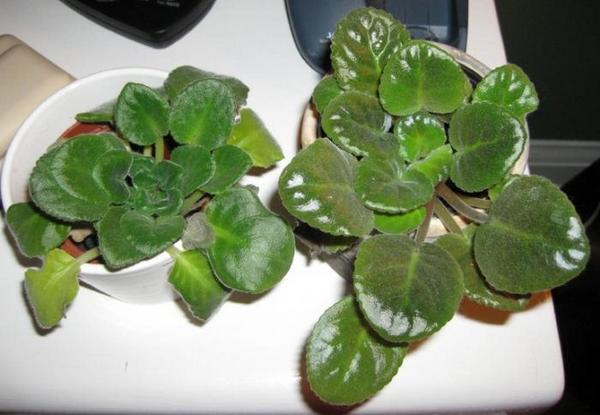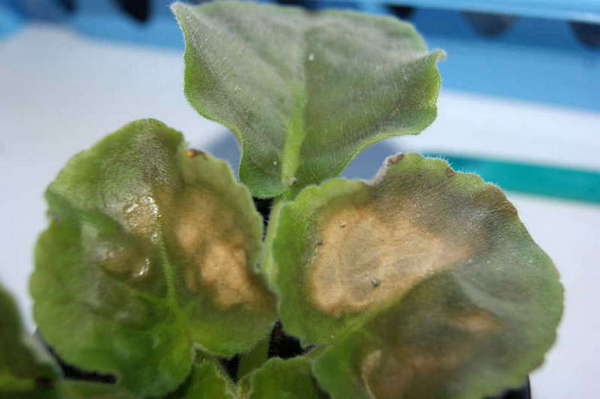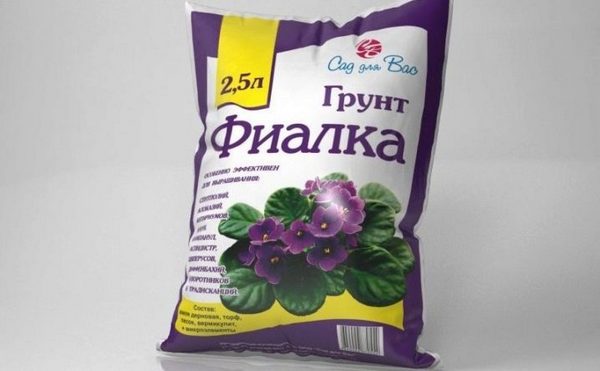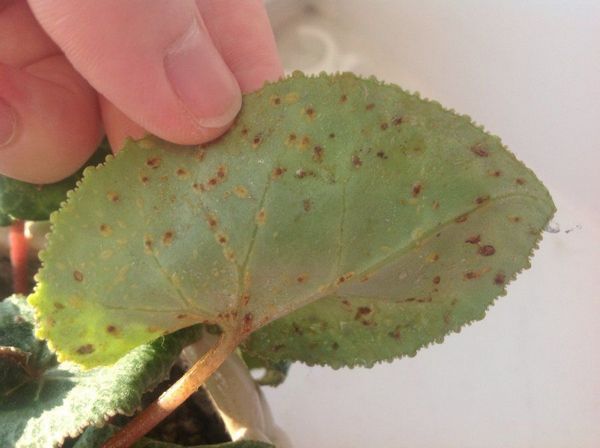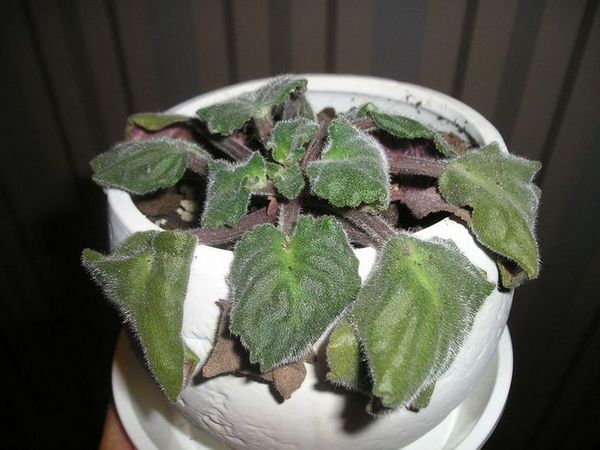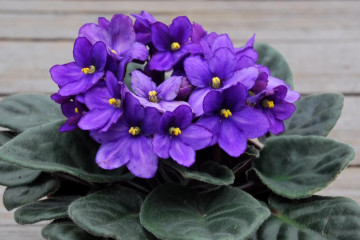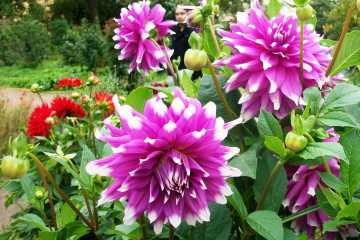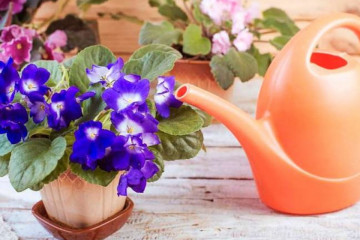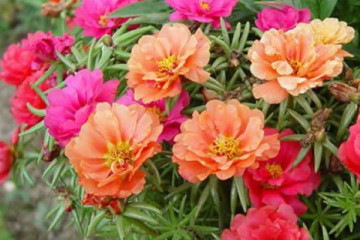Why violets don't bloom - how to make them bloom?
Content:
Home violet or saintpaulia grows in many indoor plant lovers. The popularity of the flower is associated with its unpretentiousness and beautiful buds of various colors. Inexperienced growers, who first encountered an unpleasant phenomenon, begin to look for an answer to the question of why violets do not bloom. The problem can be caused by a violation of the rules of care or an attack by parasitic insects.
What responsibilities should a gardener take on when caring for violets
A beautiful and bright violet can delight with its colors for a long time. But sometimes, for various reasons, there is no flowering. To avoid this, and at the same time prevent common crop diseases, it is necessary to fulfill the following requirements specified in the description of the plant:
- moderate watering - daily in summer, but in small quantities, in winter - no more than 2 times a week;
- artificial increase in the light period in winter up to 10 hours;
- constant air humidity at 50%;
- the optimal temperature regime - in the cold about +25 degrees, during the growing season - up to +25 degrees;
- when irrigating the land, you must not touch the green part, and it must also be protected from direct sunlight.
The culture does not need additional spraying, transplanting, feeding and soil renewal is carried out according to a strict schedule.
Why violets don't bloom
You can find out why the buds are not formed by the leaves of the plant. When trying to persuade him to bloom, professionals and amateurs get exactly the opposite result. A properly organized rest period, top dressing, no overflow or underflow - all factors play an important role. Only by observing all the rules of agricultural technology can you get the plant to bloom normally.
How to find out the reasons
Why violets do not bloom at home and what to do: finding out the source of the problem is carried out according to the state of the leaf plates. The main signs of deviations are presented:
- the presence of non-standardly large, healthy leaves and the absence of peduncles - the main source of this phenomenon is considered to be excessive fertilization, especially those containing nitrogenous elements;
- slow or stalled growth of leaf plates indicates low humidity, a feature occurs in winter, with active operation of central heating batteries, or during drought in summer;
- small, undeveloped greenery indicates a lack of nutrients and depleted soil.
Lack of nutrition can be manifested by partial or absolute yellowness of the crown. When it occurs, the plant cannot form buds - all forces are redirected to support life. If you look closely at the plates, it will immediately become clear why the violet stopped blooming.
One of the serious reasons is considered the whimsicalness of the culture to ultraviolet light.Direct sunlight is dangerous for the plant, it can become a source of burns. It is better to rearrange the flower on the northern windowsill or create artificial shading.
Excessive watering
Violation of the rules for moistening the soil leads to a prolonged illness, and in difficult cases - the death of the specimen. Lack of moisture causes gradual drying out, and oversaturation causes rotting of the root system. Symptoms of insufficient or too frequent watering practically do not differ:
- drooping and faded crown;
- the earth begins to peel off from the walls of the pot;
- brownish spots form on the green part of the plant;
- general lethargy of leaf plates and stems, their darkening.
Rules for watering violets
To make a crop bloom, it is necessary to strictly follow the irrigation rules. This approach will prevent possible mistakes and errors in courtship. The list of methods includes:
- Through the pallet - the drainage holes in the lower part of the tank do not impede the flow of water and prevent its stagnation. After pouring the liquid, it is left for an hour, then the excess is drained - otherwise waterlogging of the substrate and the formation of root rot will occur.
- By immersion - the container is placed in a basin filled with settled water. After 15 minutes, it is transferred to a tray and the excess liquid is drained.
- Watering can - the spout should be close to the substrate, moisture should not affect the outlet and foliage. If the rules are violated, rotting of the green part of the violet may begin.
Plant rehabilitation after over-watering
What needs to be done to make violets bloom again: Remediation measures help suppress the effects of overflow. They are carried out according to the following algorithm:
- the plant is carefully removed from the container;
- all damaged parts of the root system are excised;
- carry out the transfer to a new pot with fresh substrate.
If decay has affected most of the roots, then the green part is pruned and the cutting is tried to root. The rooting procedure can be carried out using:
- moistened soil;
- plain water;
- moss;
- hydrogel;
- peat tablets.
Wrong ground
An unsuitable or long-term used substrate does not allow the culture to develop and grow normally. A deficiency of useful elements and an insufficient supply of oxygen can lead to the death of a violet.
You can identify unsuitable soil by the following criteria:
- lack of flowers;
- slow formation of the green part or complete cessation of development;
- the appearance of a dense crust near a dried earthen coma;
- the appearance of a whitish coating on the surface.
When preparing the soil mixture, they take garden soil, spill it with a weak solution of potassium permanganate (disinfection is carried out). Peat is added to the composition, in a ratio of 1 to 1.
Experienced flower growers recommend not to engage in the manufacture of suitable land on your own, but to purchase a specialized mixture at a flower shop. In this case, it will meet all the requirements and contain trace elements necessary for the plant.
The list of popular substrates includes:
- "Academy of Growth" - including peat, limestone and essential ingredients;
- "Bereginya" - as one of the best options of all specialized blanks for keeping violets, the soil contains peat, dolomite flour, sand and compost.
Rehabilitation after transplant
With restorative procedures, you need to keep the plant in optimal conditions:
- humidity - 50%;
- temperature - +21 degrees;
- place - with diffused light, reliably protected from drafts.
Correct transplantation and proper supervision will allow you to get the first buds a month after the completion of the procedure.
Pests
Parasitic insects are divided into two classes:
- Sap-feeding - domestic crops are attacked by aphids, thrips, whiteflies and scale insects. Pests suck out liquid contents, provoking rapid wilting and death of plants. Young shoots, buds and leaves are of particular gastronomic interest for them.
- Pulp-feeding - insects destroy not only the green part, but also the root system. Famous representatives include weevils, ticks and nematodes.
If the first signs of a pest attack are ignored, the plant will initially become weak, and later will begin to wilt. The parts that have lost juice dry up, turn yellow and rot. The surface is covered with brownish spots and stripes, all the forces of culture are redirected to survival.
The only way to solve the problem is to use specialized insecticidal solutions:
- Akarina;
- Aktofita;
- Fitoverma;
- Actellika.
All damaged areas are removed before the procedure. Processing is carried out at intervals of 10 days, three times.
Consequences and rehabilitation after infection
Plant recovery is possible with a weak or medium attack force, when the pests did not have time to destroy the roots and most of the green mass. With further supervision, the standard watering regime is observed, the quality of the substrate is monitored and the air is not excessively dry.
Pest prevention
Preventing the spread of parasites requires:
- keeping all new copies in quarantine - up to 3 weeks;
- different flowers should not touch;
- warm showers periodically;
- remove dry shoots in time.
In addition to processing plants, you need to regularly do wet cleaning at the site of their localization.
External factors
Third-party sources also have a great influence on the vital activity of culture.
- Heat. The heat leads to drying out, damage to the roots. In case of drought, the plant needs spraying or placing a container of water next to it.
- Cold. A low temperature can lead to the death of violets during hibernation. It should not be allowed to drop to 17 degrees or sudden changes.
Correct care
Culture in natural conditions prefers to settle near water sources: rivers, reservoirs, ponds. At home, it is more difficult for her to come to terms with constantly dry air.
To guarantee normal growth and bud formation, the following requirements must be met:
- choose the right place for the pot;
- do not exceed or lower the humidity - the optimal mode is 50%;
- moistening the soil - without fanaticism and droughts;
- spraying bushes in the heat;
- diffused lighting;
- timely fertilization of the soil and transplantation;
- temperature regime.
If all else fails, you need to change the variety of violets
After completing all the nuances of the content, inexperienced gardeners may face the same problem: the home specimen refuses to bloom. Florists recommend forgetting about a failed attempt and purchasing another variety of violets:
- blooming almost all year round;
- releasing buds for a short time and resting for a long time.
Home varieties of violets, when blooming, resemble small, bright and colorful buds. Some lovers of home plants create mini-gardens on windowsills with different colors of petals: pink, blue, purple, white. The culture is notable for its rare beauty and can serve as a decoration for an ordinary city apartment.
